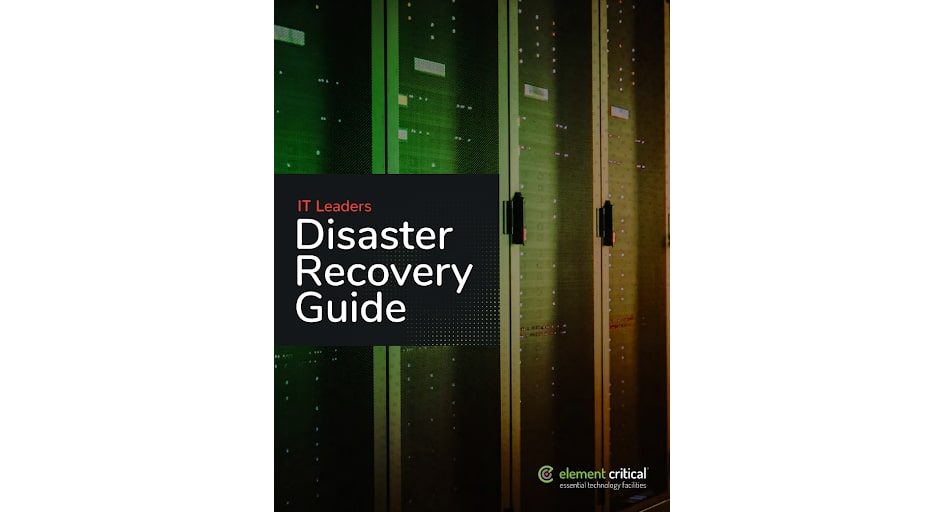Originally posted on Data Center POST
With the disruption of business models in recent years, nearly every business can now be classified as a “digital business”, regardless of the industry. IT infrastructure has become essential to modern business models to keep pace with consumer demands and competitively deliver services.
However, modern IT systems are vulnerable to interference that can spell disaster for businesses, whether inflicted naturally or human induced. To reduce IT vulnerability and stem disruption events, businesses require disaster recovery planning to protect core IT infrastructure. Yet, it can be challenging for many companies to know where to start.
In Element Critical’s eBook, “IT Leaders: Disaster Recovery Guide,” it outlines an overview of the critical steps businesses need to take to create a comprehensive disaster recovery plan. Businesses are amplifying their disaster recovery and prevention planning by leveraging reliable data center partners that deliver enterprise class colocation services to keep their business running in the event of a disaster.
Prepare for an IT Disaster
Disasters can happen to anyone, anytime and anywhere; no business is immune to the risk of data loss or system downtime. Even low-risk enterprises are affected by natural disasters. Furthermore, only 2% of companies can recover from an IT disaster in less than an hour. When downtime can cost as much as $5 million per hour, many businesses cannot afford to be unprotected. For this reason, it’s vital for all organizations—no matter how big or small—to have a disaster recovery plan in place. In fact, having a disaster recovery plan in place is now an integral part of day-to-day business operations.
There are many factors to consider when creating a disaster recovery plan, ranging from discovering the scope of your IT resources, prevention and restoration procedures, to operational management and communication strategies during a crisis event.
When building an effective data information management plan, choosing proven partners with purpose-built facilities in a safe and secure location for your disaster recovery site is a crucial step toward risk mitigation. Element Critical offers data center colocation in geographically diverse locations and a full suite of services to give enterprise customers an advantage in maintaining uptime and transitioning operations to restore services effectively in the event of a disaster.
Always on with Element Critical
In a world where disasters are non-stop, it’s essential to know you can rely on an IT partner invested in achieving your business goals. And when it comes to disaster recovery, Element Critical delivers the always-on capability to protect your critical data. Here are some factors to consider when leveraging colocation for disaster recovery.
State-of-the-art Facility
Element Critical operates Tier 3 data centers in Austin, Houston, Chicago, North Virginia, and Silicon Valley. These facilities are purpose-built, and operating to deliver high performance availability. Locations are selected to optimize customer access yet situated to mitigate risk from local natural disasters and security risks. Each facility is purpose-built to withstand disaster impacts for that region and operates with fully redundant equipment and cooling solutions.
More importantly, Element Critical’s Service Level Agreement (SLA) commits to 100% uptime. Unlike carriers who plan failure into their contracts with several .9’s added behind the decimal, Element Critical’s contracts make availability a priority that comes backed by their guarantee.
Element Critical’s colocation facilities are far better equipped to protect IT systems in a natural disaster than average companies can afford to build their in-house data centers. Our sites offer integrated protection from floods, hurricanes, and security risks. Multi-layered security from Vesda fire systems, crash-rated fences, cameras, on-site security, mantraps, and biometric access are all implemented with one purpose in mind – to keep your data safe.
To read the full article please click here.

